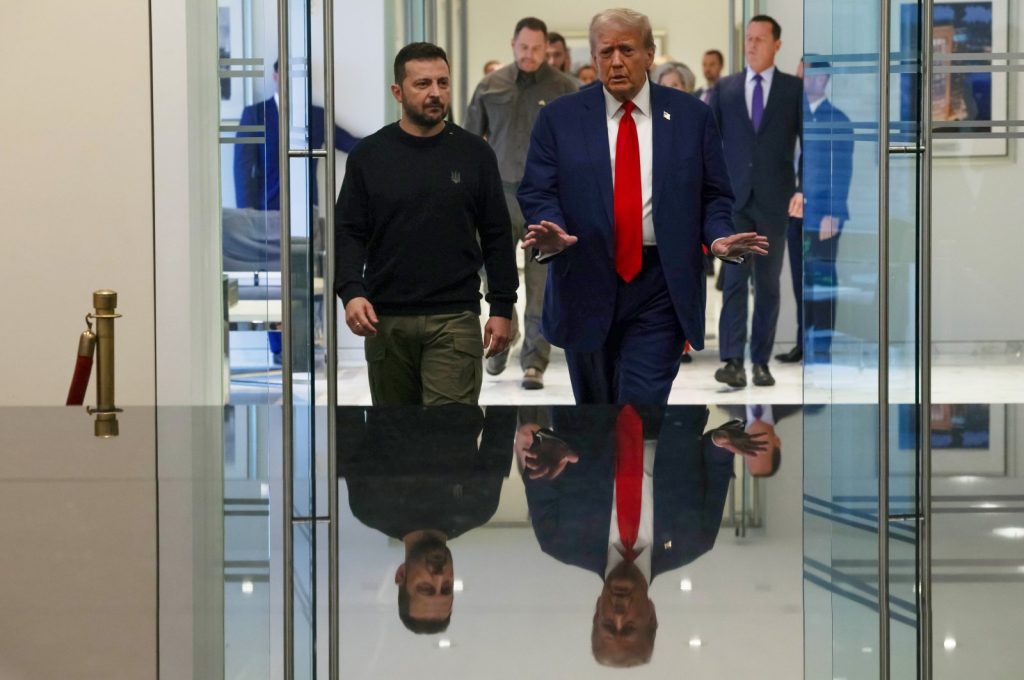Since Russia’s full-scale invasion on Feb. 24, 2022, the United States has provided over $64 billion in military aid to Ukraine. Donald Trump, the fresh president-elect of the U.S., has been critical of Ukrainian President Volodymyr Zelenskyy, referring to him as the “greatest salesman on earth” for obtaining significant U.S. support. With his victory in the U.S. elections, Ukraine’s prospects seem uncertain, as he has promised to “End the war in 24 hours” during his campaign.
During his first term, the Trump administration reassessed numerous multinational commitments, leading to withdrawals from some notable agreements such as the Trans-Pacific Partnership, the INF Treaty and the Paris Agreement. Additionally, Trump pressed NATO allies to contribute more to the alliance’s financial burden. In 2016, Trump even said that the U.S. would not necessarily defend new NATO members in the Baltics in the event of a Russian attack if those countries had not “fulfilled their obligations to us” in terms of their financial contributions to the alliance.
Although he claimed that if he was elected president, he would consider recognizing Crimea as Russian territory and lifting the sanctions against Russia, he did not do so during his term. Besides, in 2019, Trump faced his first impeachment inquiry, accused of withholding military aid from Ukraine to pressure its government into investigating President Joe Biden and his family for alleged involvement in Ukrainian politics.
Although Trump has repeatedly stated he could swiftly end the war for the second term, he has not provided specifics on what this peace would involve. His claim was seen as overly simplistic and unrealistic, given his unpredictable and populist approach. His proposed peace plan may involve pressuring Ukraine to give up territory or abandon its NATO aspirations. This aligns with suggestions from his advisers, such as creating autonomous regions within a demilitarized zone and excluding Ukraine from NATO. One option could be to revisit the Minsk agreements, with European troops overseeing peace enforcement, not NATO or the U.N.
James David Vance, Trump’s running mate, has also been vocal about his views on Ukraine. Following Russia’s 2022 invasion, he expressed indifference toward Ukraine’s fate, noting that Ukraine’s primary challenge is a lack of resources, as it requires more soldiers and supplies than the U.S. alone can provide. If Trump prioritizes domestic policies such as economic recovery, infrastructure development, or immigration as he did in his first term, U.S. resources and attention could be shifted away from the Ukraine crisis.
A reduction in military assistance to Ukraine, or the imposition of stricter limitations on such support, could weaken Ukraine’s defensive capacity and potentially embolden Russian operations. While Ukrainian President Volodymyr Zelenskyy has a victory plan that embraces inviting Ukraine to join NATO, with Donald Trump, a known NATO skeptic, set to assume the U.S. presidency, the Ukrainian plan now seems fairly unrealistic.
What if help to Ukraine stops?
Former British Prime Minister Boris Johnson recently cautioned that British troops might be sent to Ukraine if Donald Trump reduces U.S. defense funding for the war-affected country. Johnson’s remarks reflect concerns about potential shifts in Western support for Ukraine if Trump reduces U.S. defense funding. The U.K. has contributed 7.8 billion pounds in military aid to Ukraine since the start of the invasion and is set to provide an additional 3 billion pounds in military support from 2024 to 2025. However, whether Britain’s potential support would be sufficient remains uncertain, especially given that the European Union and its 27 members have only provided $48.4 billion in military aid, while the U.S. alone has contributed over $64 billion.
Having said that, not all European countries are on the same page; some might be less eager than the U.K. to send boots to Ukraine. For instance, not long ago, German Chancellor Olaf Scholz dismissed Kyiv’s appeal for an immediate NATO membership invitation and ruled out sending long-range “Taurus” missiles to Ukraine.
In March 2022, Moscow and Kyiv held a series of talks in Istanbul, Türkiye, to find a common ground to end the conflict in Ukraine. The Istanbul agreements may still represent the most practical and feasible framework for peace. According to the agreement, Ukraine would be permitted to seek EU membership while remaining neutral, limiting its military size and abandoning its NATO aspirations. Following the talks, President Recep Tayyip Erdoğan stated that Ukraine and Russia had made progress on four out of six contentious issues and he aimed to encourage Russian President Vladimir Putin to pursue peace by becoming a “peace architect” and making an “honorable exit.”
Allegedly, Boris Johnson undermined these negotiations, blocking a potential cease-fire. In September, Putin claimed that Western countries dismissed the agreements reached in the Istanbul peace talks, aiming instead to secure a “strategic defeat” for Moscow.
Trump’s victory in the U.S. elections has again boosted hopes of ending the Russian-Ukrainian conflict, Türkiye’s top diplomat Fidan said recently. While reviving the agreement may not instantly end the war in “24 hours,” it could represent Trump’s most effective and quickest approach to honoring his promise. Moreover, it might usher in a new chapter in U.S.-Türkiye relations, demonstrating the potential for collaboration between the two nations in promoting regional peace.


